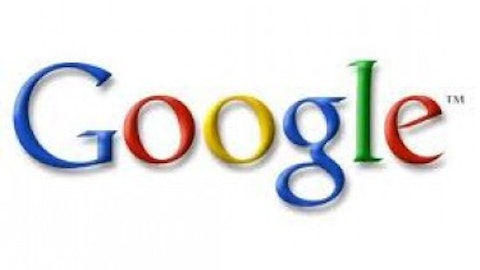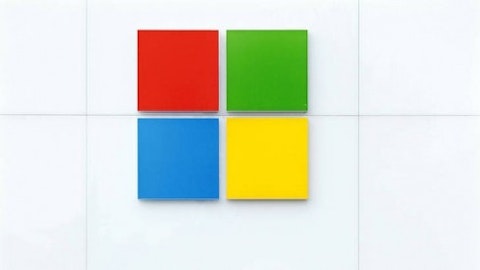On May 22 Hewlett-Packard Company (NYSE:HPQ) reported its fiscal 2013 Q2 results, which indicated that HP’s long downward slide in revenue and earnings is nearing an end. Investors were buoyed by the news, and Hewlett-Packard Company (NYSE:HPQ) shares shot up nearly 14% in after-hours trading.
As CEO Meg Whitman admitted, the recovery process is “non-linear” and far from over, but the signs of a bottom are at hand. In the table below I summarize much of the relevant data.

While revenue is still falling, down 10% year over year, the sequential drop was much less, only 2.7%. Given Hewlett-Packard Company (NYSE:HPQ)‘s revenue and earnings trajectory for the past couple of years, signs of a bottom could only come as a welcome justification of investors’ faith in Hewlett-Packard Company (NYSE:HPQ) and Whitman’s ability to execute a turnaround. That faith has propelled HP’s stock to a 49% gain for the year, making it the best performing Dow component, well ahead of concrete signs of a turnaround, until now.

However, Hewlett-Packard Company (NYSE:HPQ)‘s recovery is tenuous and at risk from forces out of its control. When asked when HP could expect to resume sustained revenue growth, Whitman’s answer was unequivocal: when the Personal Systems computer business starts growing again. Together with Printing, Personal Systems still generates the lion’s share of HP’s revenue and is really the heart of the company.

The steep declines in Personal Systems revenue and the even worse decline of 29% in Consumer revenue probably indicates that the industry as a whole is in for another decline in shipments when calendar Q2 data becomes available from Gartner and IDC.
Of course, Hewlett-Packard Company (NYSE:HPQ) is not just a PC company. Every one of the operating segments listed above suffered some year over year revenue decline, although not as great as in the Personal Systems segment. But just as Personal Systems may have reached an inflection point in revenue and operating income, the other segments also bounced back for fiscal Q2, with either slight gains or declines over the previous quarter.
The shadow of Windows
Wanting to be good partners, HP execs were forced into euphemisms of “macro-economic factors” and “dramatic contraction in the PC market,” but it’s clear that everyone is worried about one thing: the impact of Windows 8. Yes, I know that Microsoft Corporation (NASDAQ:MSFT) recently announced that it had sold 200 million Win8 licenses, so it’s probably true that not all companies are suffering the steep declines in PC sales that HP is. According to both the Gartner and IDC reports for Q1, Lenovo maintained about the same number of shipments year over year, and picked up a couple of percent of market share in the process.
I’m sure that many would take issue with the idea that Windows 8 has caused problems, but I think most will agree that Windows 8 and RT have yet to effectively counter the disruptive growth of ARM-based mobile devices, especially devices running Google Inc (NASDAQ:GOOG)’s Android OS. IDC’s Tablet OS market share data, released on May 1, showed that Android had the dominant market share in Q1 of 56.5% of tablets shipped and showed explosive year over year growth of 247.5%. Given that PC shipments declined by about 14% according to IDC, it’s clear that tablet device growth is impacting PC sales. At Google Inc (NASDAQ:GOOG) IO keynote on May 15, Google predicted that Android device activations would reach 900 million this year.
Many expect this to change when Windows 8.1 is rolled out and Intel delivers large numbers of Haswell Core processors and Bay Trail Atom processors later this year.
I consider the issue for Windows 8 to be more fundamental: it’s really only desirable for a touch-screen enabled device. As such, companies like HP with large inventories of non-touch screen PCs are suffering, and will continue to suffer until their product lines fully embrace touch screens. I just did a search on HP’s site for touch-screen devices and found just 13 PCs, (not counting HP’s few tablets and convertibles). Even the majority of HP’s “Ultra Books” are older non-touch models, despite Intel having mandated that the UltraBook label could only be applied to touch-screen devices. The necessity of touch for Windows 8 is something that caught the PC industry off guard when Windows 8 was introduced last fall, and it appears that HP is still working through its product pipeline.
Whitman indicated that Personal Systems would resume growing by the end of the year, so it’s very likely that HP’s Windows products will have mostly shifted to touch-screens by then. In the mean time, HP is back filling PC sales with a couple of Android tablet devices, and its first Chrome OS laptop.
I doubt that Microsoft Corporation (NASDAQ:MSFT) is very happy about this, but it’s clear that HP needs the Android tablets. HP plans to introduce an Android convertible, the Slatebook X2, based on the Nvidia Tegra 4 processor with a 10.1 inch screen. Even though HP will offer very compelling Wintel-based convertibles as well, the Slatebook X2 will beat them on price.
Adding to Microsoft’s consternation, and Google’s glee, HP’s Pavillion Chromebook will be its first Chrome OS device. Chromebooks have been the best selling notebook computers on Amazon for quite a while, and the key is price. HP’s Chromebook will sell for $330, making it the lowest priced laptop that HP offers.
HP’s diversification into devices based on operating systems provided by Google is critical to lowering its exposure to the vagaries of Windows 8, and may even become significant sources of revenue in the coming year.
Is the optimism justified?
HP continues to restructure to cut costs, but this has yet to yield much cost reduction. Gross margin is still a very lean 23% and SG&A is only just beginning to decline from a year ago. As a percent of revenue, R&D has actually increased year over year and quarterly, and let’s hope this trend continues. HP needs to innovate in order to improve gross margin with new products. HP’s R&D revenue percentage is comparable to Apple’s (2.57%), which I also think is too low, but well behind Microsoft (12.9%) and Google (13.15%). Overall, I think the organizational trends are in the right direction.
The advent of new low-power Intel processors and Windows 8 updates will help drive growth in the Windows PC industry starting in the second half of the year. If HP can transition their product line to be almost fully touch-screen based, then Personal Systems will resume sustained growth and investor optimism will have been justified.
The article Has HP Turned the Corner? originally appeared on Fool.com and is written by Mark Hibben.
Mark is a member of The Motley Fool Blog Network — entries represent the personal opinion of the blogger and are not formally edited.
Copyright © 1995 – 2013 The Motley Fool, LLC. All rights reserved. The Motley Fool has a disclosure policy.

